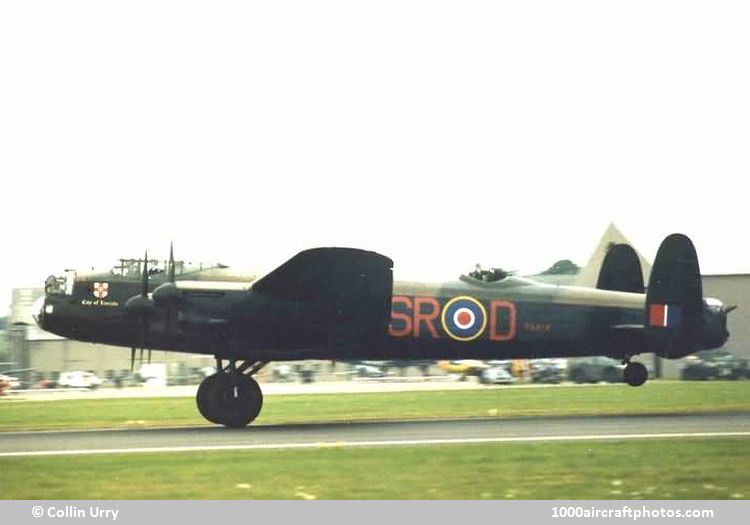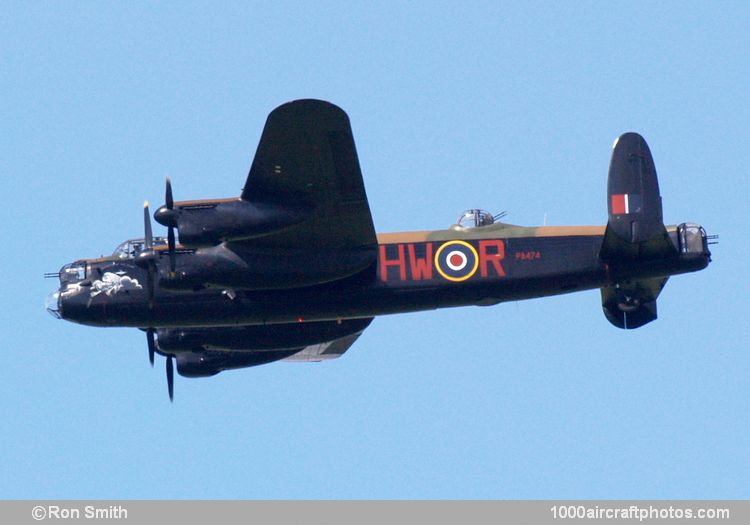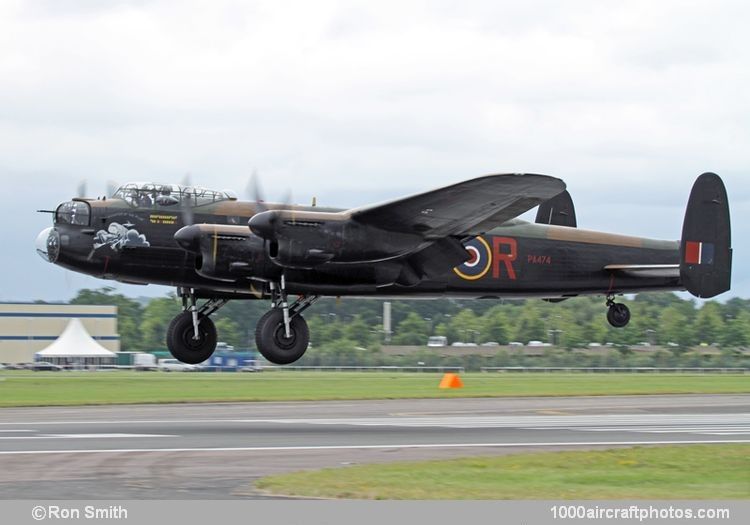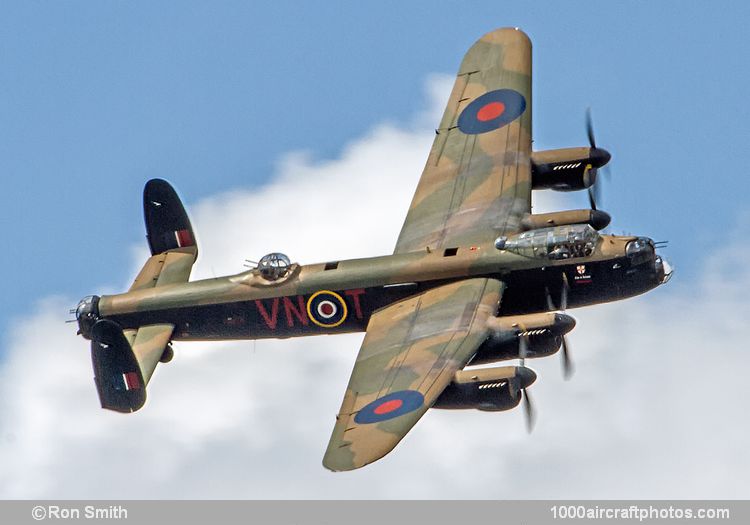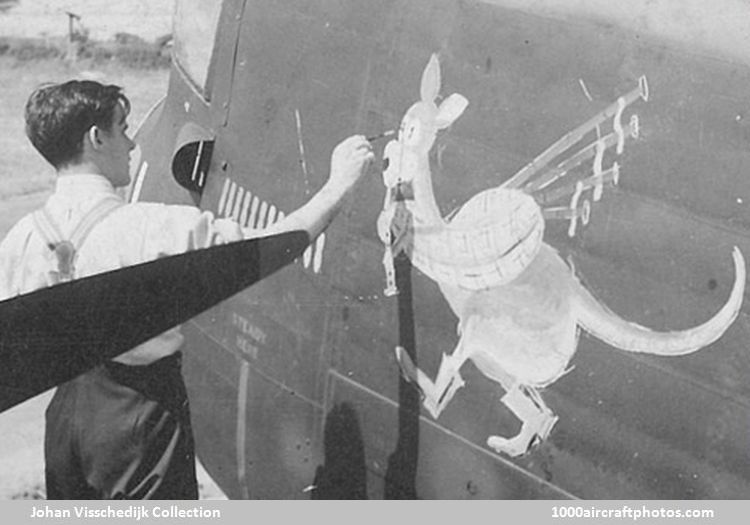09/15/2006. Remarks by Jack McKillop: "This Lancaster, also known as the 'Lanc', was built by Vickers-Armstrong Ltd. at Chester, Chesire, England, and delivered to the RAF's No. 38 Maintenance Unit on August 18, 1945. It was then sent to Sir W.G. Armstrong-Whitworth Aircraft Ltd. for conversion to a photographic reconnaissance P.R.Mk.I and then transferred to No. 32 Maintenance Unit on December 11, 1946 and then to No. 82 Squadron based at Takoradi, Gold Coast on September 9, 1948.
The aircraft was loaned to Flight Refuelling Ltd on May 26, 1952 and then to the Royal College of Aeronautics at Cranfield, Bedfordshire, England, on April 2, 1954. While at Cranfield, it was used to test a wide variety of wing sections in a dorsal mount until December 1963.
In 1964 it was adopted by the Air Historical Branch (AHB) for future display in the proposed RAF Museum at Hendon. On November 1, 1973, it was allotted to the Battle of Britain Memorial Flight for flying display and was repainted in the markings of a Lancaster assigned to No. 101 Squadron (SR-D) based at Ludford Magna, Lincolnshire, England, during World War II.
In 2000, the aircraft was painted in the markings originally worn by Lancaster Mk.III, RAF s/n EE176, coded "QR-M", assigned to No. 61 Squadron, based at Skellingthorpe, Lincolnshire, England, during World War II. EE176, named "Mickey the Moocher', was one of only 35 Lancaster centurions, aircraft that flew and survived in excess of 100 missions. 'Mickey' is believed to have flown between 115 and 128 missions against targets including Berlin (15 missions), Cologne, Dortmund, Brunswick and the breakout at Caen. The nose art features 'Mickey the Mouse' pulling a bomb trolley and 112 bomb symbols as shown on a wartime photo of EE176. The original QR-M survived the War but like so many other 'Lancs' that had served their country well, it was unceremoniously scrapped.
This is one of the only two flyable Lancasters in the world. The other one is in Canada."
